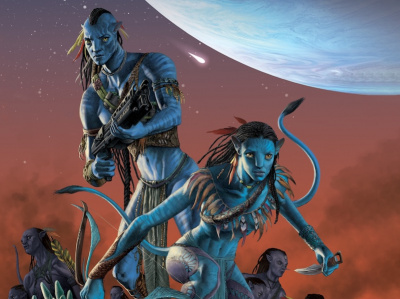
We caught up with Dallas Middaugh of Random House Publisher Services and Kumi Shimizu, General Manager of Kodansha Comics at Comic-Con to talk about Kodansha’s first year of publishing its own manga in the U.S., and plans for year two.
We’re a little more than a year into the Kodansha manga publishing program. How do you evaluate that first year?
Middaugh: We started in May 2011 with our first titles, and in the last year I feel that we had a successful launch for the program overall. By far the biggest and most exciting thing in the last year was the launch of Sailor Moon in September 2011. I’m very proud of the work we’ve done together with Kodansha and what I’m especially proud of right now is that Sailor Moon is the #1 bestselling manga in the United States currently for 2012.
How many total manga volumes have you released so far from Kodansha?
Middaugh: We tend to do about 80 to 90 books per year, so while I don’t know the number off the top of my head, I feel safe telling you we’ve probably got about 200 volumes in print including backlist titles from Del Rey. So we have about 200 volumes on the market right now.
Shimizu: From around 50 different titles
Are you anticipating that pace of 80 or 90 new releases per year in the future?
Middaugh: Yes. On average we do about seven or eight new releases per month.
Sailor Moon volumes were your best sellers. You said at New York Comic Con last year that you had just gone back on press and you were up to 100,000 in print on the first volume. Where is that number today?
Middaugh: I don’t know if we’re comfortable sharing any numbers on Sailor Moon at this point. When we made that announcement it was something we had to get approval for from Japan.
Have you reprinted since then?
Shimizu: The first print run was 50,000, the reprint was 50,000 so a total of 100,000 for volume one of Sailor Moon. Code Name: Sailor V, too.
Has there been a third printing of Sailor Moon Volume 1?
Shimizu: Not yet.
What new series are you most excited about launching between now and the end of the year?
Middaugh: In the fall we have a number of new series. We have Genshiken Second Season Vol. 1, Genshiken being one of the bestselling series under the Del Rey manga imprint. Genshiken Second Season is a sequel to that series, kind of a Genshiken the next generation type of thing.
We also have in November Missions of Love by Ema Toyama. Ema Toyama wrote I Am Here!, which was a sleeper hit for Del Rey and Kodansha. There was a volume released under Del Rey and a volume released under Kodansha. And the book did so well for us that we started to see what other works by Emma Toyama we could do. That’s a shojo series we’re really looking forward to.
Also this fall we’ll be launching the sixteenth volume of Battle Angel Alita Last Order. That’s a series that used to be at Viz and that’s the latest volume out in Japan. It shifted to Kodansha last year, so of course it shifted to Kodansha Comics here in the U.S.
Also in December we’ll have Danza by Natsume Ono, Natsume Ono being the author of House of Five Leaves, Ristorante Paradiso, and Not Simple. This is a single volume of her short stories.
Are you going to do the first 15 volumes of Battle Angel Alita?
Middaugh: Yes, we’re going to release those in omnibus form starting in spring of 2013. What we’re especially excited about there is each volume will contain the three volumes that were published by Viz, but it will also contain 80 pages of new manga created by the author for the Kodansha edition that came out last year.
We were surprised by the success of Sailor Moon, although it had been very popular years ago and was out of print for a while so there were some pent up demand. Do you attribute the success to readers who were familiar with it or new readers? How did people find it?
Middaugh: I think it’s a combination of both. When we look at the sales, of course, we don’t have any demographic information but we did see a higher than usual number of orders for our manga coming through on Amazon. What that indicates is an audience that has a credit card and that tends not to be a teen audience. But having said that, on a monthly basis Sailor Moon #1 continues to be our bestselling manga. I think it’s a combination. Initially we grabbed all the people who were fans from the old Sailor Moon who were simply so excited that it was finally coming back into print, but that in turn increased the word of mouth. We subsequently ended up getting that book into Walmart where it’s done very, very well for us. Walmart in fact has subsequently brought in every volume of Sailor Moon, where it’s continued to do well.
So that’s my answer: the first wave buying it, I believe, were people buying it for the nostalgia of having read it eight or ten years ago, but the numbers are continuing so strong that I think we’re getting newer and newer readers all the time.
We see there’s going to be a new Sailor Moon anime, which will take a while to get here. Is the old anime being shown or available anywhere and is that contributing to the exposure of the property?
Middaugh: I don’t believe the old Sailor Moon anime is available in the U.S. currently. As far as the new anime, we don’t know who the U.S. partner is going to be for that.
In terms of exposure for the property, the only thing that we’ve seen out there are some t-shirts at Hot Topic and other venues, but that’s about the limit of it.
Who controls the licensing on Sailor Moon?
Middaugh: The way things are handled in Japan is the anime producer handles the anime licensing and the publisher handles the print licensing. Typically most merchandising is made from the anime, so in that particular case with the original Sailor Moon anime it’s Toei that handles that license.
So the Hot Topic t-shirts were licensed off the Toei anime?
Middaugh: Yes.
You mentioned Walmart as a new channel for distribution. Obviously another source of distribution for books, Borders, was lost in the last year. Can you talk about the bookselling environment and how that impacts manga sales overall and what you’re looking at going forward?
Middaugh: Sure. We were obviously playing very close attention to how things were going with Borders last year. We started publishing our new line of books in May of 2011. It’s very interesting for us because we weren’t significantly impacted by Borders because by the time we started publishing they weren’t ordering new books anymore.
So we were very fortunate. The loss of Borders did not have a direct bottom line impact on us because we didn’t have anything in the market to get back, and we didn’t really lose a channel that we had had for Kodansha Comics.
We’re asking in a bigger picture way: the opportunities to reach consumers have declined in terms of doors of booksellers. What do you think that means for the sale of manga going forward?
Middaugh: We have talked about the numbers and I track the manga numbers very, very closely. Manga numbers have been in decline for the past couple years, but what we’ve discovered in the past year or so is that decline is dramatically slowing. So the simple fact of the matter is that most manga readers —usually when they’re committed, they’re committed—are reading a series. I actually believe that it takes more than the loss of a retail outlet to keep them from pursuing the manga that they want to read. So we may have lost Borders, but we’ve seen numbers go up substantially at Barnes and Noble. We saw our numbers go up at Amazon, and places like Right Stuf and AAA Anime. This is based on comparing it to where things were with Del Rey Manga. The books are there; they are available for the people who want to read them.
Kodansha’s digital strategy is through your own applications only?
Middaugh: Currently yes, that’s right.
Why?
Middaugh: It’s really more of a financial reason than anything else. When Kodansha sells directly on the app, they’re able to keep more of the money. That’s the short answer.
Do you see holding to that strategy forever?
Middaugh: No. We’re constantly, constantly evaluating our digital strategy. No question about that.
Did you have announcements at Comic-Con?
Middaugh: Just one: the final volume of Negima! is going to be volume 38 next spring--that’s generally known. In that same month we’re going to launch a single one-off volume called Negiho, which is kind of a light-hearted, whimsical, alternate reality story based on the Negima! characters.
Are there still Kodansha titles licensed to other publishers or are you bringing everything in-house?
Middaugh: Kodansha is still licensing to other publishers. Vertical in particular has a few Kodansha series and Dark Horse still has some. I don’t think there’s any question that Kodansha Comics is publishing the majority of Kodansha’s books in the U.S. but it’s not an exclusive arrangement.







